HTDC: TechJobsHawaii
When I first joined Revacomm I was brought in on a project that had been in discovery for quite some time. The Hawaii Technology Development Corporation, a state-funded agency in charge of building up the tech industry in Hawaii had tasked Revacomm with building a new job board to replace their existing one which didn’t get much traffic. However, after identifying more valuable contributions from HTDC, it was clear to the team at Revacomm, that’s not at all what they needed. So instead, over my term at Revacomm, we worked with them to create an event system that integrated with LinkedIn to help connect users who attend their events. Note: All of the mocks show the brand Ulana, however due to some internal concerns the name was later switched to TechJobsHawaii.
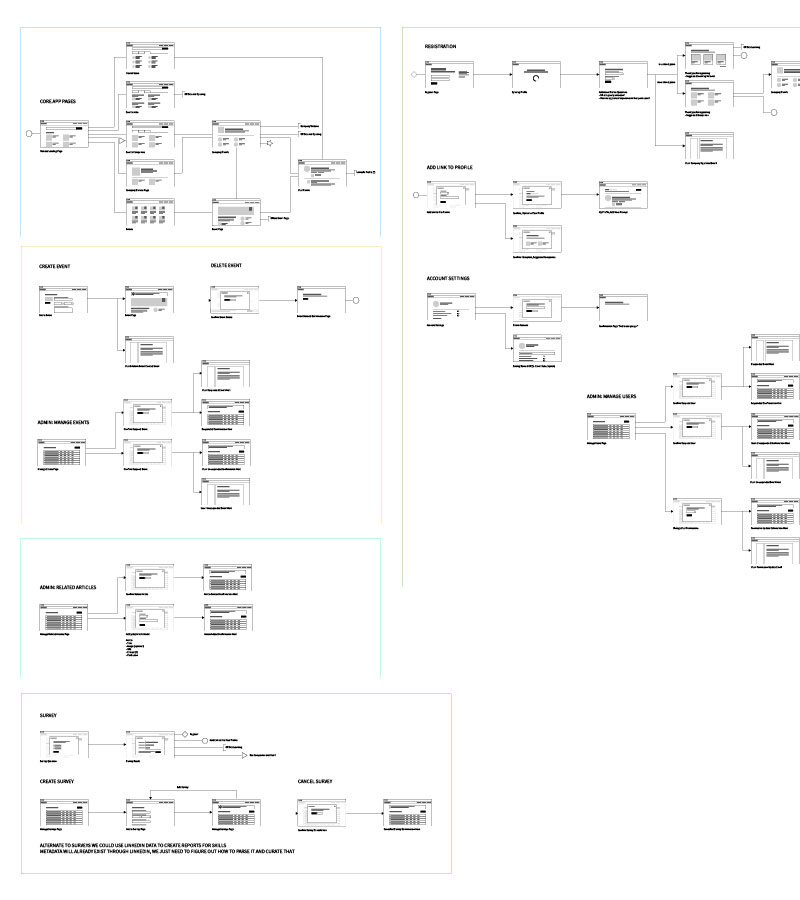
During my time at Moz I had learned a really valuable technique called “micro-framing” from our UX architect and this project was the perfect candidate to try it for myself. It had a ton of workflows which fed into one another and incorporated actions that happened outside of the tool. This meant we needed a map of all of the workflows and exactly how they interacted with one another to effectively break-up the work and collaborate as a design and development team, as well as to get sign-off on the exact scope of work from HTDC.

After determining the direction of the tool, we decided that in order to be most effective, we needed users to be able to explore events without having an account. In addition to events, our stakeholders at HTDC wanted to include resources they had often recommended to students at the University of Hawaii; one of their key demographics for the project.
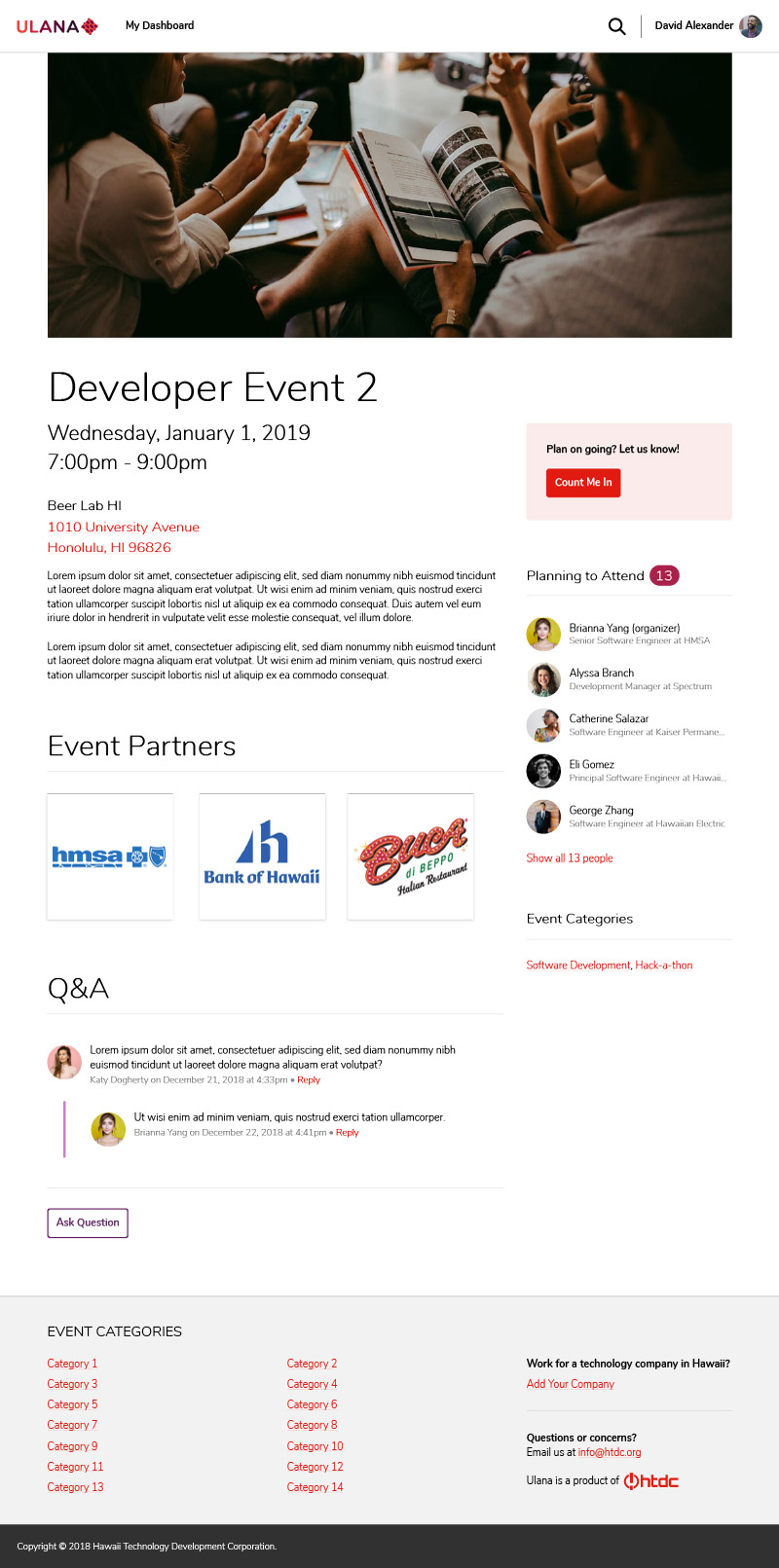
The key workflow of the tool began by finding an event you were interested in and confirming your attendance. Once confirmed, the user would appear in the list of expected attendees and add the user to a mailing list for a reminder prior to the event.
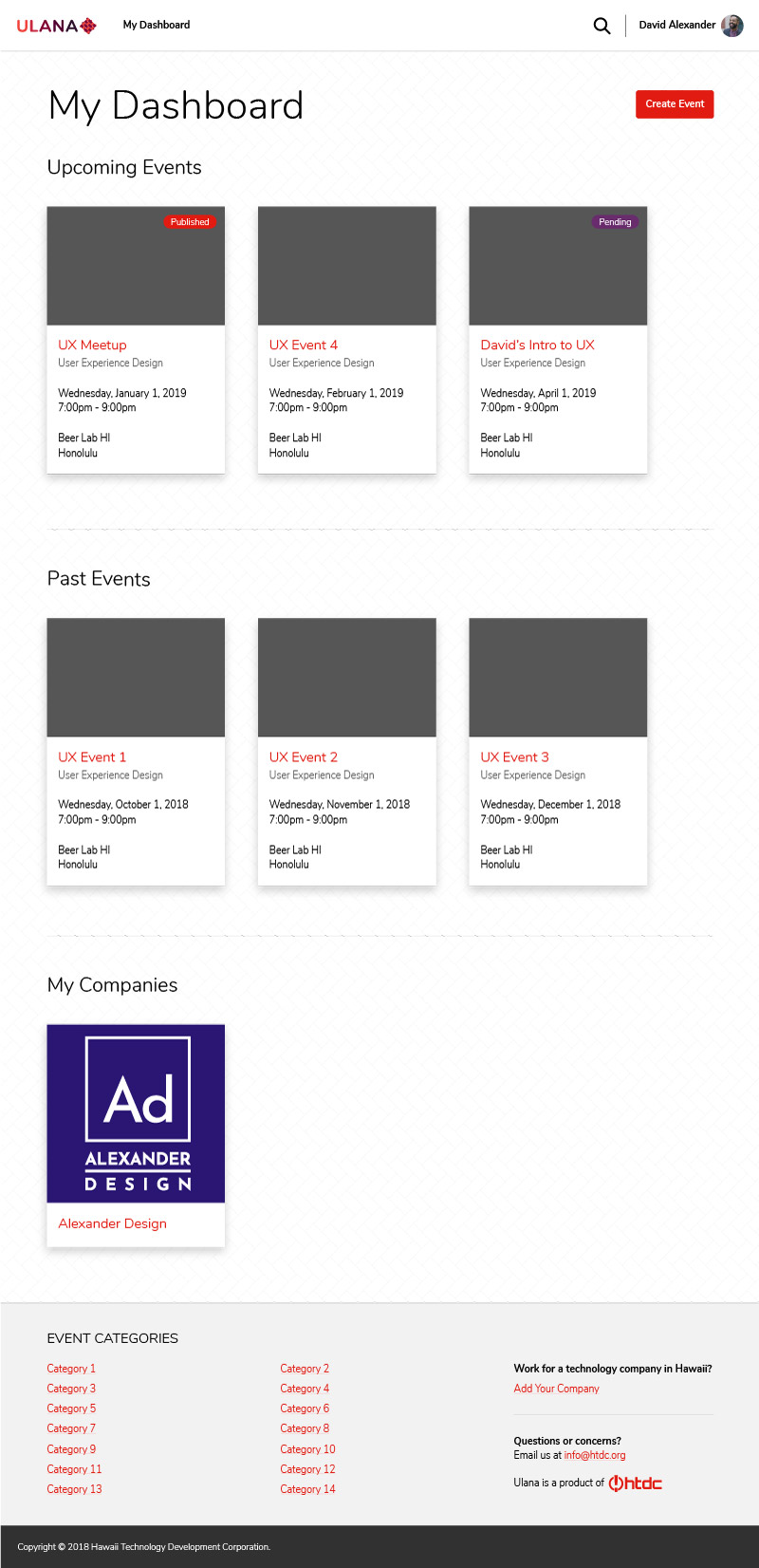
Once logged in, users could access their upcoming or past events from their dashboard. The were also able to create events and manage any companies they had added to the tool.
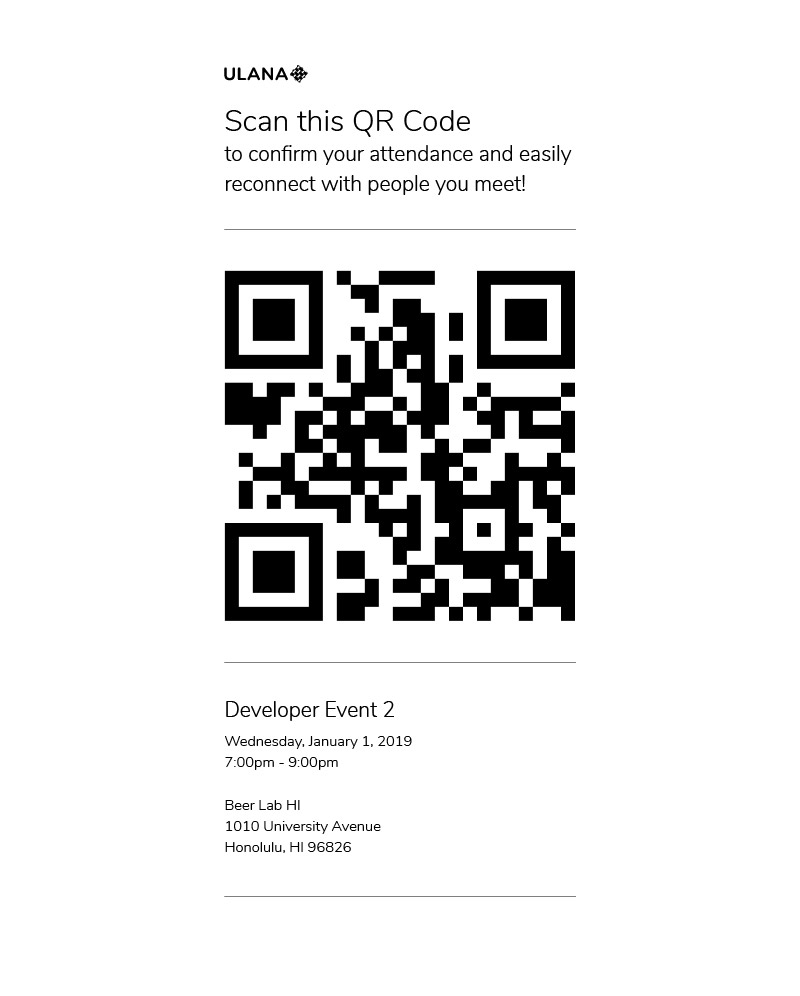
Any event created would generate a page with a dynamic QR code accessible on the event page by the event creator or HTDC admin. The QR code could then be displayed at the event where users would scan it and be added to the attendees list on the event. This would add them to a separate email list for the event which sent them a reminder to check-in afterwards to reconnect.
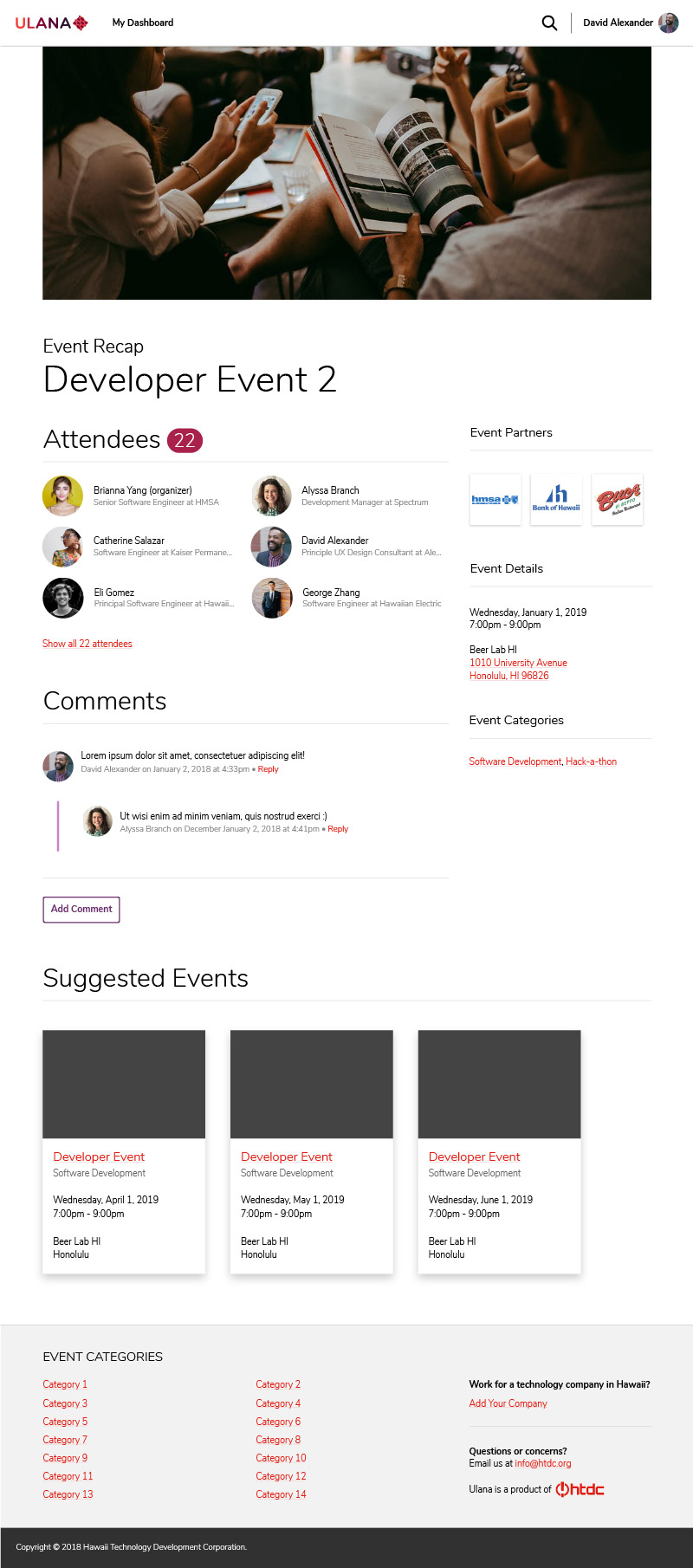
Upon returning to the event page during or after the event the user would see an Event Recap. The primary purpose of the recap was to provide users the opportunity to reconnect with other attendees, however they could also post comments and find similar events.
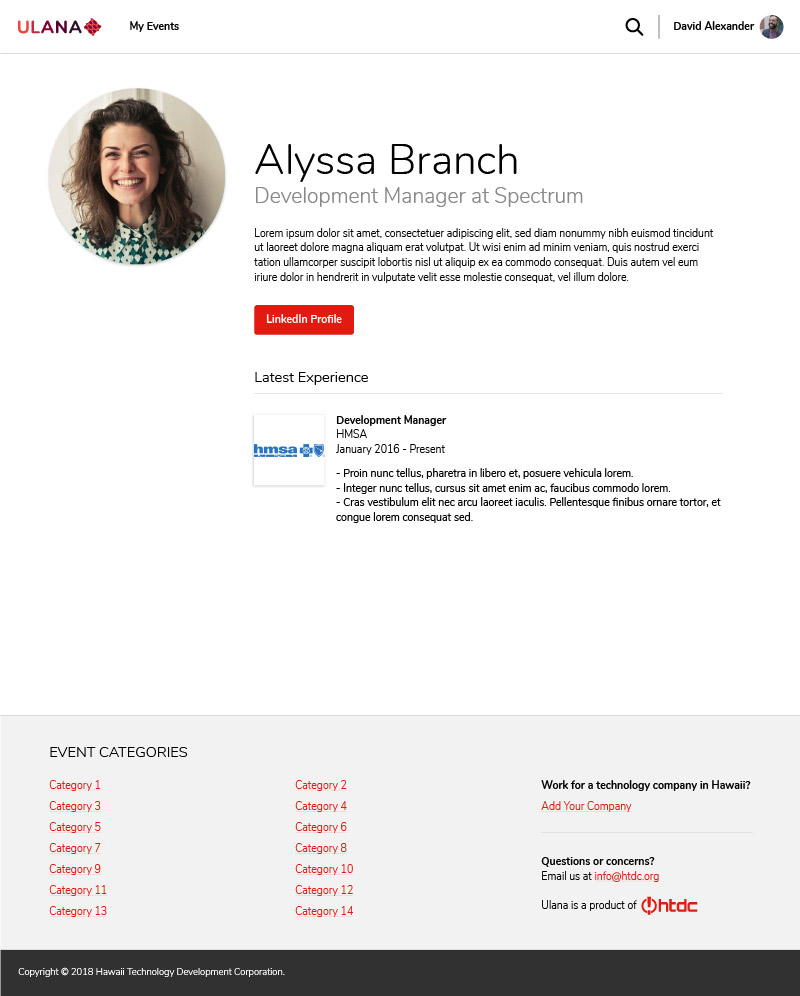
After selecting an attendee to connect with on the event recap the user would arrive on their profile where they could review some details and visit their profile on LinkedIn to connect. We had originally hoped to create a more robust profile where users could connect directly, however we were limited to the information and actions LinkedIn would provide, so the process required an extra step.

One of the goals of the project was to allow users, not only HTDC administrators, the ability to create their own events. This meant we needed to create a robust workflow including an approval process.

As part of the project we needed to provide a way for administrator to review and approve community created events and companies. Admins were notified of new items by email which provided contact information and a link to review. Once confirmed one way or the other, the creator was notified of the result and could contact HTDC for information if required.
Additional Thoughts
From a workflow perspective, this was by far one of the most demanding projects I’ve worked on to date. While I tried to provide a good sampling, showcasing the full extent of the project would have been far too large to cover reasonably. I learned quite a bit through consulting, designing, and ultimately helping to build this tool and it’s given me the confidence since to grow as a developer as well as a designer. While in the end this is a very specialized tool aimed at a specific and localized community, I believe there is some real potential in the idea of a “LinkedIn Events” which combines the connectivity of LinkedIn with real-world, in-person networking.